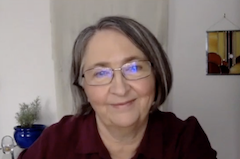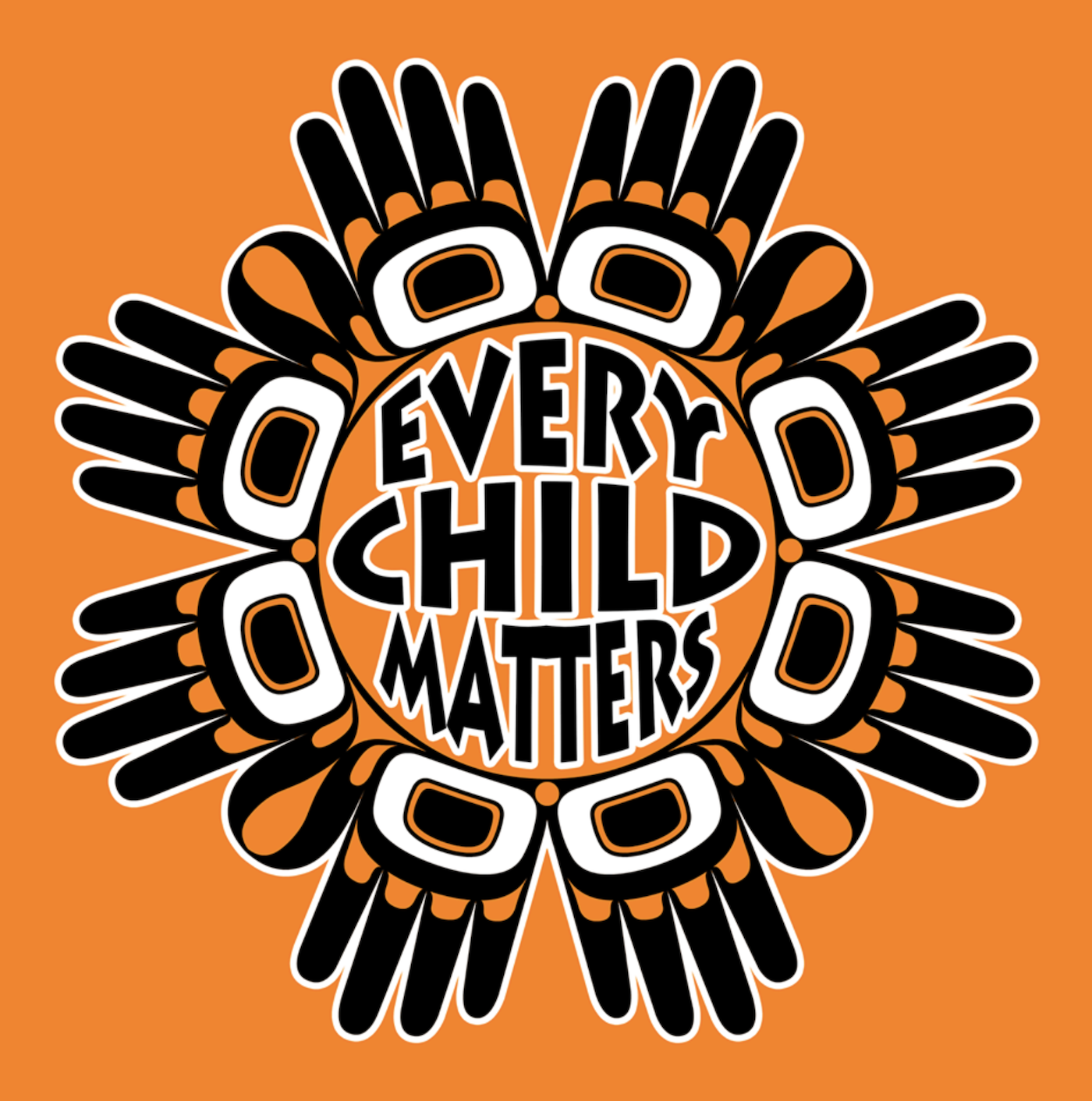September 30th is Orange Shirt Day, commemorating children who were forced into Canada’s Indian Residential Schools.
Today on Facebook I saw the list of 2,800 children who died in these schools. There are at least 1,600 more unnamed children who died. My chest feels heavy with grief. I remind myself to soften my shoulders. To keep breathing.
A 50-metre-long cloth with the names of Indigenous children who died within Canada’s residential school system was unveiled Monday during a ceremony at the Canadian Museum of History. I opened the list and made it part way through the letter A. These are not their true names. Indigenous children were not called Albert and Agnes and Alice.
I stopped. I could not just scroll through. Each name represents a child who died.
In the early 90’s, I participated in the Names Project. The AIDS crisis had been with us since the early 1980’s and I had been working at AIDS Calgary Awareness Association since 1987. There was such stigma and hate against gay men and many people with AIDS died in the closet. The Names Project consisted of quilts made to honor people who died of AIDS. There were quilts for famous people, like Rock Hudson. There were quilts for people I knew personally. We brought the Names Project to Calgary and laid them out on the square at City Hall. Knowing their names and seeing these quilts made by loving, grieving family and friends brought people who died of AIDS alive in a visceral way. And now we have this list on red cloth. 2,800 names.
Residential schools were the stated policy of the Canadian government to “take the Indian out of the child”. This is part of settler colonization. The schools were funded by the Canadian government and run primarily by churches. Children were abducted from their parents and communities by priests and others acting on behalf of our government. The first school opened in the 1870’s. The last one closed in 1996. Twenty three years ago.
How did these children live? Why did these children die? They were terrified, rounded up in their communities and taken in groups to the school. On arrival their hair was cut, they were stripped of their clothing, and from then on they were beaten for speaking their mother tongue. Churches put the fear of God into them and “educated” them in the ways of the white people who had taken their land.
These children had been ripped from their family and community, suffering severe emotional abuse and loss. Some children escaped and died trying to walk home to their communities. Physical and sexual abuse perpetrated by priests, nuns and ministers was common and only recently revealed.
What happened to the parents whose children were stolen? Some followed and camped near the schools. Many drowned their pain and grief with alcohol. Their children had been abducted. They were powerless to get them back.
My niece Crystal and I stood on land south of Calgary Alberta where there is a plaque commemorating children who died at the residential school there. Bodies of children were discovered when floods in the nearby river began revealing skeletons. Bodies of children in the field near the school. Unmarked. Hidden.
What do we do with loss and grief of this magnitude? It feels like too much to take in. Our nervous system reacts and we go into flight/ fight/ freeze.
We flee when we ignore or minimize the problem. It couldn’t have been that bad. That wasn’t our intention. Lots of kids died back then. We weren’t responsible. We didn’t know. That happened hundreds of years ago. It wasn’t my fault. We were giving them a chance at a better life knowing English or French and our ways. We deny the truth.
We fight when we dehumanize Indigenous people to distance ourselves and justify abuse. We take common stereotypes of alcoholism in Indigenous communities now and project it back as justification. Those children were better off being away from those drunks and abusers. They are lazy and have been living off of us for centuries, taking our hard earned tax dollars. We go into fight response when we can’t afford to let in the shame and knowledge of what our white ancestors did and how we still benefit from the system of white privilege and systemic discrimination.
Abuse of alcohol and other drugs, sexual abuse and social breakdown was not the reason why residential schools began. They are a direct result of the trauma individuals experienced in Indian residential schools. The intergenerational effects of this trauma are very much alive in Indigenous communities today. The effects of genocidal policies and racism are reflected in the lack of clean drinking water, addiction, poverty and the high suicide rates of Indigenous children today.
We need to let this in. Individually and as communities we are in freeze. It is too much to take in the horror and feel what it was like. When we are triggered into grief and shame, we block it out. Wab Kinew, in The Reason You Walk, speaks about taking his six year old son with him when he spoke to white people about Indian residential schools because people had a harder time distancing themselves. This boy could be their child or someone in their community. They could relate.
In Canada we have Truth and Reconciliation, a process of learning the truth and finding ways to atone and reconcile. This list of names of children who died in Canada’s residential schools is one of the 94 recommendations from the Truth and Reconciliation Commission.
Take a deep breath. Learn about what happened and absorb it gently. Bearing witness to horror and trauma is both difficult and necessary. Indian Residential Schools are part of the cost of colonization. Understanding and learning factual history is necessary.
We open our hearts and bear witness to the grief and suffering of these children, their families and communities.
We open our hearts with compassion.
We open our hearts and connect in our shared humanity.
Learn more:
National Center for Truth and Reconciliation
The Reason You Walk, by Wab Kinew
Richard Wagamese movie Indian Horse
Missing and Murdered Indigenous Women and Girls



